Blog
Tagged In: Clean Water, H2Ohio, Lead Service Line Replacement, Water Pollution
H2Ohio: Investing in safe and clean water for Ohio
Ohio Environmental Council, February 21, 2023
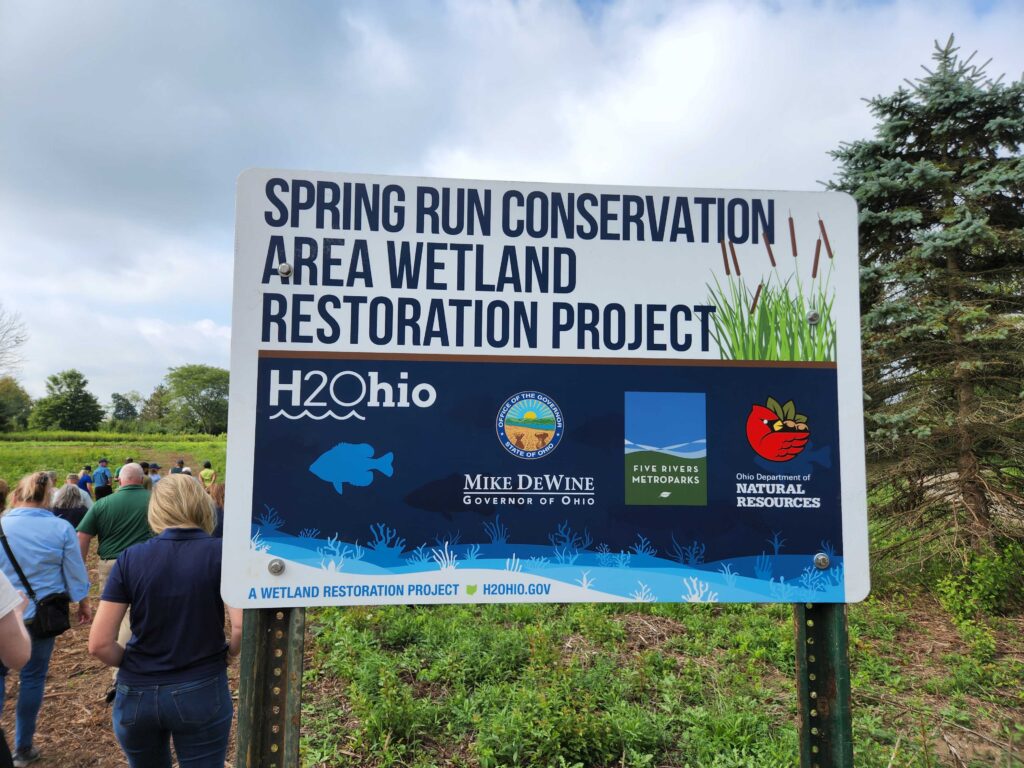
From our Great Lake to the mighty Ohio River – and the many lakes, ponds, and streams in between – Ohio’s plentiful water resources provide drinking water, recreation opportunities, and a strong economy for millions of people. Since OEC’s founding more than 50 years ago, supporters like you have been critical in our fight to protect and improve water quality for all Ohioans.
Although Ohio is a water rich state, our waterways and our drinking water face a number of challenges such as perennial harmful algal blooms, pollution, and chemical contamination including lead exposure from outdated water lines. The most notable harmful algal bloom presence occurs in western Lake Erie near Toledo, OH. The shallow western portion of our Great Lake creates a perfect situation for these toxic harmful blooms to grow out of control when too much phosphorus comes from agriculture, wastewater, and septic systems up-stream. These overwhelming toxic harmful algal blooms pose a public health threat to the local drinking water supply, at local beaches all while hindering the local economy. The clearest path to keeping these toxic blooms at bay is to reduce the phosphorus entering the watershed so they can’t grow to a size that is out of control.
Ohio’s water infrastructure also faces many challenges with so many old water systems across the Buckeye State. Most recently, Ohio received a D+ grade for drinking water and stormwater infrastructure as well as a C- grade for our wastewater infrastructure. These assessments are conducted by the American Society of Civil Engineers in their annual Infrastructure Report Card. The total cost estimated to catch up on all water infrastructure needs is nearly $30 billion dollars. These improvements would reduce sewage from entering in our waterways after severe rain events by phasing out combined sewer overflows, improving water treatment plants that clean drinking water, and by removing lead service water lines. Ohio is second in the nation for the number of lead service lines, with an estimated 650,000 lines still in place that threaten the safety of Ohioans’ drinking water.
So what is being done at the state level to work on some of these water quality challenges? The OEC and our members played an important part in the launch of H2Ohio. This program is a comprehensive and science-based effort designed to improve Ohio’s water quality from source to tap. Championed by Governor Mike DeWine and funded by the State of Ohio, H2Ohio specifically focuses on reducing phosphorus in our waterways by creating wetlands, implementing more agricultural conservation practices, addressing failing septic systems, and it also focuses on preventing lead contamination in schools and daycare centers. These programs are implemented by the Ohio Department of Natural Resources, the Ohio Department of Agriculture, and the Ohio Environmental Protection Agency respectively.
OEC and our members played an important part in the launch of H2Ohio. This program is a comprehensive and science-based effort designed to improve Ohio’s water quality from source to tap. Funded by the State of Ohio, H2Ohio specifically focuses on reducing phosphorus in our waterways by creating wetlands, implementing more agricultural conservation practices, addressing failing septic systems, and it also focuses on preventing lead contamination in schools and daycare centers.
The use of computer mapping technology, or Geographic Information Systems (GIS), is a critical tool that provides data driven support for decision making. Discover and learn about the H2Ohio Wetlands Creation, Phosphorus Reduction and Water and Sewer Infrastructure Programs using the interactive GIS map below. Pop-ups provide information on the H2Ohio program, providing transparency for the citizens of Ohio.
Click here to see a map of all current H2Ohio projects
REDUCING NUTRIENT POLLUTION
Each summer, we monitor reports of harmful algal blooms endangering waterways across the state in which we fish, boat, swim, and source our drinking water. Nutrient runoff such as phosphorus from farms plays a key role in the development of toxic algae in the western Lake Erie basin and water bodies across Ohio.
H2Ohio has invested substantial resources to encourage adoption of ten of the most effective and cost-efficient practices to reduce agricultural phosphorus runoff that plays a part in driving annual harmful algal blooms. Starting in the Western Lake Erie Basin in Northwest Ohio, H2Ohio and the Ohio Department of Agriculture (ODA) offer funding incentives to farmers to implement new conservation practices to improve water. Initially, nutrient management plans were the only practice of the ten that funding was available for to roll the program out. These plans utilize soil testing data to guide farmers to best practices for their land. Now, and in future years of the program, ODA is offering the full suite of ten practices that in varying ways will help keep nutrients and sediments on farm fields and out of waterways. The Ohio Agricultural Conservation Initiative (OACI) – supported by the OEC and our academic, conservation, and agricultural partners – has also played a key role. OACI created a widely supported farmer certification program and a best management practice program to promote conservation practices. Nearly 2,000 farmers enrolled in the H2Ohio and OACI programs in their first year alone.
H2Ohio identified the 10 most effective and cost-efficient practices that have been proven to reduce agricultural phosphorus runoff. H2Ohio will provide economic incentives to farmers who develop a nutrient management plan that includes a combination of the best practices listed below:
(1) Soil testing
(2) Variable-rate fertilization
(3) Subsurface nutrient application
(4) Manure incorporation
(5) Conservation crop rotation
(6) Cover crops

(7) Drainage water management
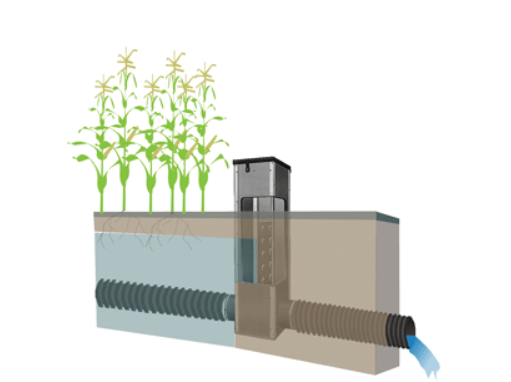
(8) Two-stage ditch construction – Creating modified drainage ditches slows the flow of water and allows the phosphorus to settle.
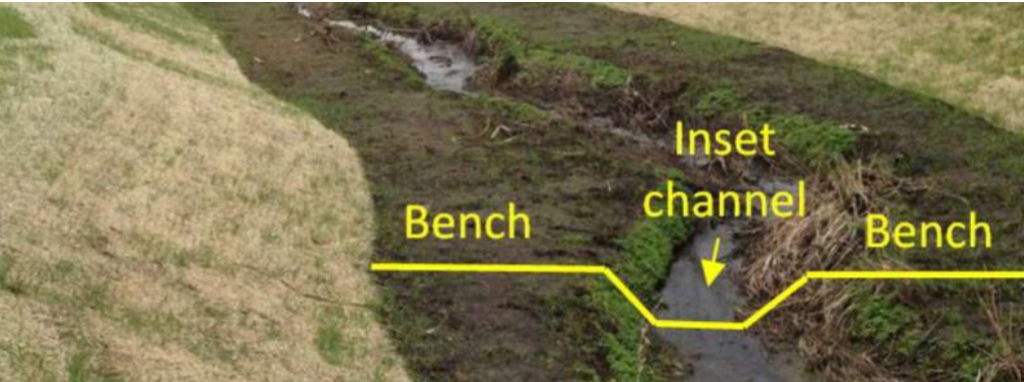
(9) Edge of field buffers
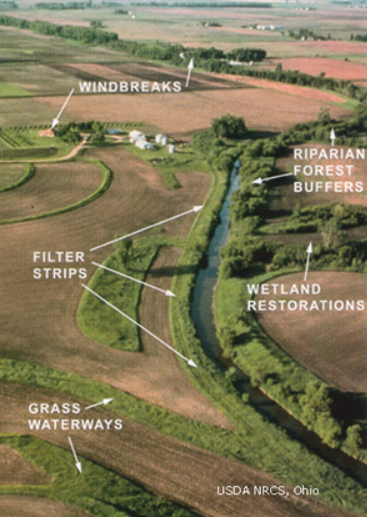
(10) Wetlands
The H2Ohio phosphorus reduction plan will focus first on reducing runoff into the Maumee River Watershed and into Lake Erie, and will eventually be offered to other parts of the state in the future.
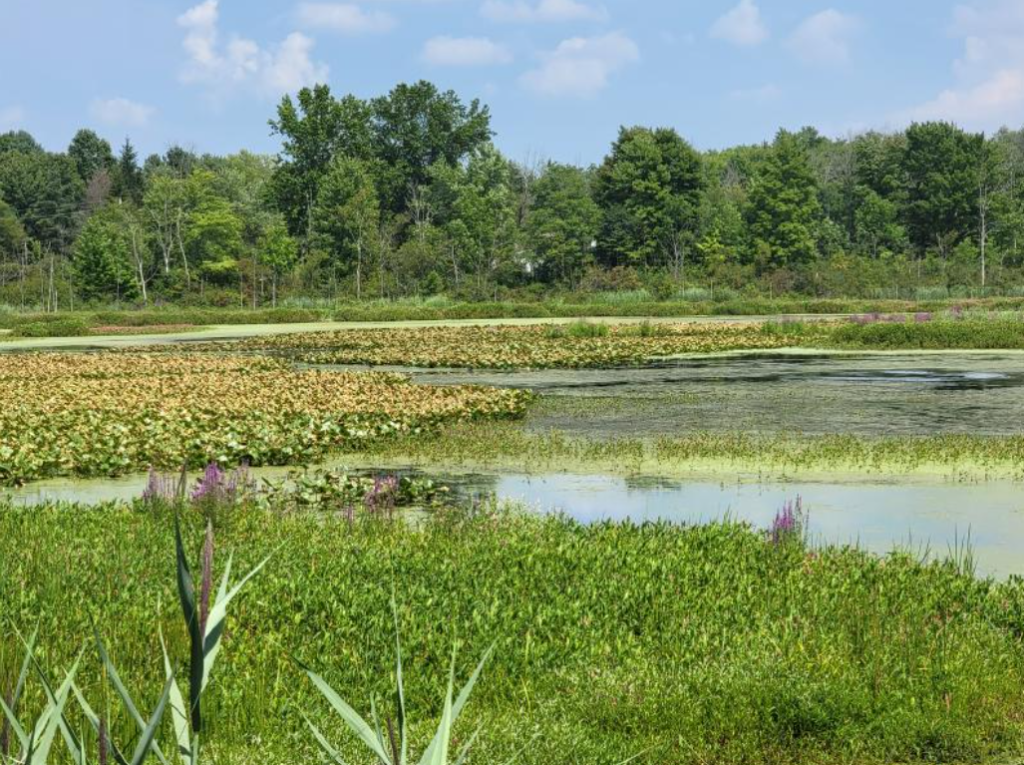
BUILDING WETLANDS
Wetland creation is another key approach to combating harmful algal blooms across the Buckeye State. Wetlands have been called “nature’s kidneys” because of their ability to filter sediments and excess nutrients. Our wetlands stop phosphorus and nitrogen from getting into our lakes and rivers. Wetlands slow the flow of water, absorb that water, and remove nutrients that water may be carrying. Under the leadership of the Ohio Department of Natural Resources, the H2Ohio wetland program is focused on building and restoring wetland habitat primarily in the Maumee watershed in Northwest Ohio. Additional projects have started around the state, including one near Chippewa Lake, the state’s largest glacial lake, in Northeast Ohio.
Learn more about Wetlands and H2Ohio here. You can download the Why are Wetlands Important infographic here.
WATER INFRASTRUCTURE IMPROVEMENTS
Under the direction of the Ohio Environmental Protection Agency, H2Ohio will fund infrastructure projects in disadvantaged communities to help ensure they have safe drinking water and quality wastewater infrastructure. H2Ohio funds projects to connect communities to higher quality drinking water and wastewater systems, projects to improve existing infrastructure, and the removal of lead service lines from daycare centers and schools. H2Ohio will also help replace hundreds of failing home sewage treatment systems in low-income households to prevent the release of raw sewage onto property or into waterways.
Currently, water systems experience greater than 35% losses and breaks are projected to increase by 36% in some areas over the next 20 years. Communities need more funding to tackle this challenge without raising the water rates of Ohioans.
Ohio is thought to be second highest in the nation for lead water lines. According to a recent report , Ohio kids have elevated lead blood levels at more than twice the national rate. Health experts agree: no amount of lead is safe. Exposure to lead, even at low levels, can cause serious health effects in all age groups but especially in our children. With an estimated 650,000 lead service lines carrying water to families’ homes, getting the lead out of the drinking water delivery system is a big task. H2Ohio is a step in the right direction to delivering safe drinking water to all Ohioans.
THE IMPORTANCE OF H2OHIO
In the first year, H2Ohio Initiative has invested millions throughout Ohio on nutrient reduction, wetlands restoration, infrastructure construction, monitoring, and water technology. Learn more about the H2Ohio Accomplishments for fiscal year 2020 here and for fiscal year 2021 here .
Ohio’s water problems took many years to develop, and it will take time to implement solutions. The H2Ohio program will continue to move forward, investing in safe and clean water for Ohio. We thank the DeWine Administration for their continued investment in H2Ohio and our partners for their collaboration on this effort. Supporters like you have been critical in combating the problem of toxic algae and improving water quality for all Ohioans.


